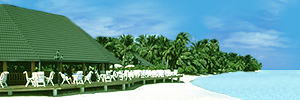



|
 |
 |
|
Equipment Used For Hiking - What To Look For
Hiking and camping can provide some of the greatest fun you can have in the great outdoors. The quality of your equipment goes a long way to creating either a wonderful experience that you-ll want to repeat or a nightmare that you-d rather forget. How to choose the right camping and hiking equipment A hiking and camping adventure can be a great test of your resourcefulness. Purchasing the equipment used for hiking and camping can prove to be the first challenge! Price Cheap camping or hiking equipment often appears attractive at first glance; however it rarely proves a sound investment. There are exceptions of course v aren-t there always? You can sometimes make large savings when buying last year-s model; whether it is a tent, a backpack or a pair of hiking boots, fashions change and the equipment manufacturers regularly update their lines. If you can find a genuine sale of quality brand products then you may be able to make substantial savings. Stick with known brands that provide a guarantee with their product. Quality brands will rarely let you down v you don-t want to find yourself on the trail with faulty hiking gear! Hiking Boots Do invest in a good pair of hiking boots. There are many top quality brands to choose from v the decision is more about the type of terrain you are likely to be hiking in and the weight of the boot. Waterproof hiking boots will cost you more but they are almost always worth the additional price. You can-t guarantee the weather when you are out hiking and wet boots will lead to blisters and great discomfort. There are several reputable online retailers of hiking boots. But, a word of warning - before purchasing hiking boots online always ensure you-ve tried on the boots in a retail store. Uncomfortable boots can cause misery on your hiking trip and have the potential for causing danger if you cannot maintain your footing due to discomfort. When purchasing hiking boots look for sturdy uppers made from leather or a combination of leather and nylon, breathable liners, reinforced rubber heels, well constructed toes and solid arch support. Soles will usually be rubber or a combination of rubber and polyurethane. Don-t forget good quality hiking socks v preferably wool. Tents When choosing your tent, consider the seasons in which you like to hike and go camping. A hiker who enjoys camping late into the fall may require a four-season tent or even a convertible tent. The downside to the four-season tent is the additional weight v they are often 10 to 20 percent heavier than a three season style. A convertible tent will allow you to adjust the ventilation and to add and remove poles as required. Three-season tents are designed for use from spring through to fall in temperate climates. Whilst they are unlikely to collapse under and inch or two of snow, a heavier snow fall may cause problems. Four-season tents usually incorporate extra poles to strengthen the walls against strong winds and heavy snow falls. These tents are usually dome-shaped so that there are no flat surfaces where snow can accumulate. Convertible tents are designed for four seasons but usually allow the removal of one or more poles to convert them into three-season tents. When purchasing a tent pay attention to the capacity rating suggested by the manufacturer v these sometimes tend to be over optimistic. Check out the tent in its assembled form and see if there is enough space. If you are looking for a two-person tent then test it out with your camping partner and make sure there is enough room for your gear v not just you and your sleeping bags. Always use a ground sheet or tarpaulin under your tent. It will protect the underside from tearing and extend the life of your tent. Sleeping Bags A sleeping bag keeps you warm by trapping air inside that is warmed by your body heat. Sleeping bags have a comfort rating which represents the minimum temperature in which the user should be comfortable. For example a user of a +30 sleeping bag should remain comfortable in areas where the temperature is not below 30 degrees Fahrenheit. Comfort ratings on sleeping bags should be used as a guide only. If you have a choice (and the budget) pick the sleeping bag that provides more warmth. Down or synthetic? A synthetic sleeping bag is usually the best choice for kids and beginner hikers. It is cheaper, it dries more quickly if it gets wet but it is heavier. Down is usually the choice of the experienced hiker. It has extraordinary insulating properties and offers tremendous warmth. It can be compacted into a small space and it will outperform a synthetic sleeping for years (or perhaps decades). Down is a lot more expensive than synthetic but considering its life expectancy it could be considered an investment. If there is a downside it is that if it gets wet it takes a long while to dry. Shape Mummies v close-fitting, narrow bags with a fitted hood. They are wider at the shoulder and taper to a narrow foot space. Their shape can be restrictive but their narrowness makes them efficient users of space, they offer great heat retention and they are often light in weight. Rectangular v these are usually warm weather sleeping bags; they have room to move, they tend to be heavy and/or bulky. They-re useful for children or family camping holidays but are not used by backpackers or serious hikers because their inadequate insulation and their bulkiness. Their shape allows too much heat to escape the bag. Semi-Rectangular v wide at the shoulders and hips but narrow at the feet. There is more space than a mummy bag which means there is more air to keep warm but they can be a good choice for someone who doesn-t like the restriction of a mummy bag. Some models have hoods. This is only a start on the equipment used for hiking, however, it will serve as an introduction to some of the gear you will find when you visit your local camping store. -------------------- Please use the HTML version of this article at: http://www.isnare.com/html.php?aid=126481 E-mail this article to your friend! HotelDirectory.ws presents direct links to hotels, apartments, hostels, motels, guesthouses,
self-catering accommodation and more. |